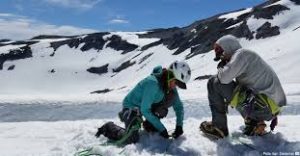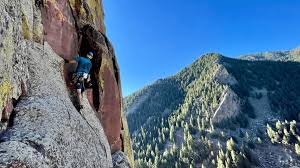Rock Climbing and Mountaineering: Conquering Heights and Embracing Nature
Introduction
Rock climbing and mountaineering are exhilarating outdoor activities that challenge both the body and mind. These pursuits are more than just sports—they represent an adventure, a test of endurance, and a deep connection with nature. Whether you’re scaling steep rock faces or ascending towering peaks, both rock climbing and mountaineering provide unforgettable experiences. In this article, we’ll explore the differences between the two, the skills required, essential gear, and tips for beginners.
1. The Appeal of Rock Climbing
For many, rock climbing is about the thrill of tackling challenges head-on. Climbers rely on strength, balance, and problem-solving skills to ascend. There’s a strong mental component as well, with each route presenting a unique puzzle to solve. The sense of accomplishment when reaching the top is unparalleled, making it a popular choice for adrenaline seekers.

2. Essential Skills for Rock Climbing
To become proficient in rock climbing, one must master certain techniques, including belaying, rappelling, and foot placement. Strength and flexibility are key, but mental sharpness is equally important. Many rock climbers train at indoor climbing gyms before heading out to natural cliffs. Building confidence in managing gear and understanding rock formations is vital for safety.

3. Skills Needed for Mountaineering
Mountaineering requires a wide range of skills. Besides basic climbing techniques, mountaineers must be adept at using crampons and ice axes, navigating in snowy conditions, and performing self-arrests. Knowledge of weather patterns and first aid is crucial, as conditions in high-altitude environments can change rapidly.

4. The Right Gear for Rock Climbing
Rock climbing gear includes ropes, harnesses, helmets, and carbines. Climbing shoes with specialized rubber soles enhance grip on rocks, and a chalk bag helps keep hands dry. Safety is a priority, so climbers also carry belay devices, quick draws, and anchors to secure themselves while climbing.

5. Mountaineering Gear Essentials
Mountaineering gear is more extensive, as it involves long duration in extreme environments. In addition to ropes, harnesses, and helmets, mountaineers need crampons for ice walking, ice axes for stability, and protective clothing for freezing temperatures. Backpacks with hydration systems, sleeping bags, tents, and cooking gear are essential for multi-day climbs.

6. Safety and Risk Management
Both rock climbing and mountaineering involve significant risks, making safety a priority. Knowing how to assess routes, practicing proper gear use, and understanding one’s limits are critical. Climbers should be aware of rockfall dangers, while mountaineers need to understand the risks posed by avalanches, crevasses, and altitude sickness. Preparation, experience, and training are key to mitigating these risks.

7. Tips for Beginners
For those new to rock climbing, starting in an indoor gym is a great way to learn the basics before venturing outdoors. Enrolling in a climbing course can provide essential safety and technique lessons. For aspiring mountaineers, participating in guided expeditions with experienced leaders is highly recommended to learn the necessary skills and survival tactics.

Conclusion:
Rock climbing and mountaineering offer experiences that go beyond the physical. Both activities foster a deep appreciation for nature and challenge individuals to push beyond their limits. Whether you’re scaling a cliff or reaching a mountain summit, the sense of accomplishment and the connection to the outdoors is unmatched. By building the right skills, using proper gear, and staying safe, adventurers can enjoy these incredible outdoor pursuits while exploring some of the world’s most awe-inspiring landscapes.
Written By: Musaffa Mushtaq
